
views
Choosing Your Outfit
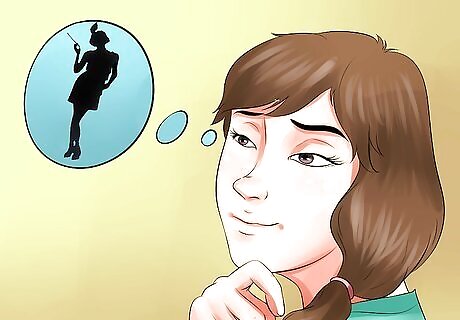
Find the right silhouette. The classic flapper look is all about the dress--specifically the shift dress. The flapper-dress silhouette is a dress that features a drop waist (the waistline was often dropped to the hips), straight vertical lines that hang loosely around the body, a scooped neckline that reveals the neck and shoulders, minimal or no sleeves, and a hemline falling just at or above the knees (a scandalously short length for the time).
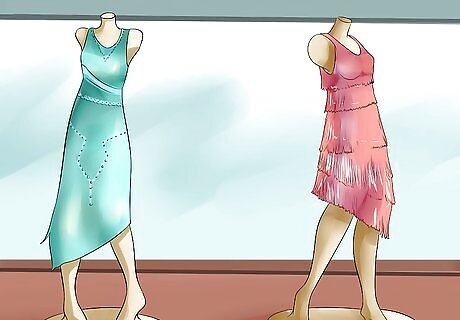
Choose your dress style. The two classic flapper-dress options are a fringed dress and a beaded shift dress. Though fringe is perhaps most readily associated with flapper fashion, Egyptian-inspired designs and embellishments were also quite popular at the time (inspired by the recent discovery of King Tutankhamen’s tomb), so keep an eye out for dresses and fabrics with a slight Egyptian feel. If you opt for the classic fringe dress, your easiest option is to buy one ready-to-wear in a vintage color--typically black, white, gold, or silver. If you prefer to craft your own dress and are handy at sewing, you can begin with a solid-colored dress that matches the flapper silhouette. If you plan to make an entirely fringe-covered dress, buy several yards of fringe (you’ll need anywhere from 6-9 yards, depending on your size and your margin of error) and sew them in consecutive horizontal rows over the length of the dress. If you prefer just a trim of fringe along the bottom, buy a yard or so of fringe and attach it just around the hem of your dress. For even more details on making your own flapper dress, see How to Make a Flapper Dress.
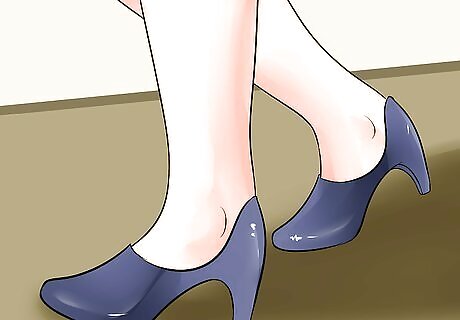
Choose your footwear. The 1920s saw a major increase in the profile of footwear, since, given the rising hemlines, shoes were a particularly visible part of the flapper outfit. The most popular shoes of the flapper era featured a heel of at least two inches, in either an ankle-strap Mary-Jane or T-strap style, sometimes adorned with sequins or beads. Flapper fashion was oriented around dancing, so choose shoes that are danceable with covered toes and chunky heels--no stilettos! You might opt for flats if you absolutely can’t deal with heels, but they may not look quite as authentic.
Doing Your Hair and Makeup
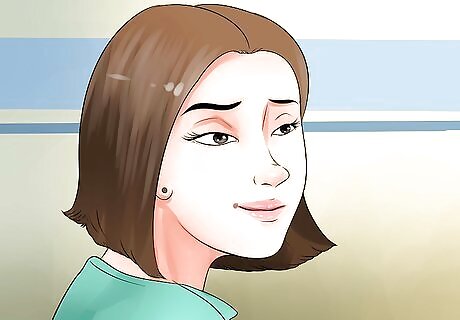
Create a flapper-era face. Flapper makeup is quite distinct and features long thin brows, lots of black kohl eyeliner, dark eyeshadow, and deep red, bow-shaped lips. To get the brow look, aim for long, relatively thin, and straight brows. If you don’t want to pluck your eyebrows into the flapper shape, you can use a brow pencil to draw them in. Use dark eye shadow and eyeliner to create a smoky look. Use black, smudged eyeliner on both the top and bottom lids and create a dark, smokey eye with dark-colored eyeshadow. For details on creating a smokey eye, see How to Get Smokey Eyes. Use a soft pink blush right across the apples of your cheeks. Use a deep red matte lipstick for lips. Try to emphasize the heart shape of your lips by lining your cupid’s bow and filling out your bottom lip with lip liner.
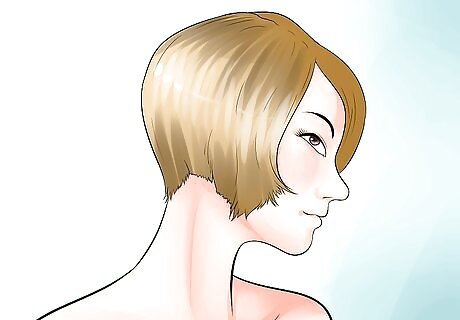
Style your hair. The true hallmark of flapper style is the bob--a short, cropped haircut that was radically unconventional for its time. If you don’t have short hair or can’t emulate it, curls are the watchword of flapper style, so style your hair in pin curls or soft waves. See How to Create Pin Curls or How to Style Finger Waves for more detailed instructions. If you already have short or bobbed hair, you can style it like a true flapper by creating waves that lay close to the head using hot rollers or a curling iron. If you don’t have short hair, you can fake a bob by fashioning your hair in a chignon (a low bun) or a rolled ponytail (pull hair in a low ponytail and tuck and pin the ponytail under, optionally securing/disguising the tucked pony with a headband or ribbon tied around your head). Or you can just wear a hat or skullcap (see Part Three) and not worry about hair at all.
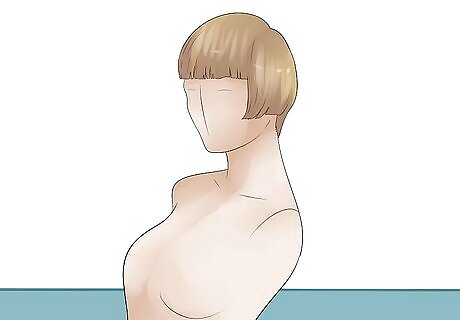
Or buy a wig. If you really want to embrace the flapper look but don’t have hair amenable to the classic flapper bob, look for a bobbed wig. If you want to emulate Clara Bow, the iconic actress who embodied the flapper style on screen, look for a short, black-haired wig. If you want to pay tribute to the great style diva of the 20s, Coco Chanel, look for a short wavy wig in a dark brown color. If your inspiration is the great silent-film actress Mary Pickford, look for a short wavy-haired wig in a light brown or dark blonde color.
Choosing Your Accessories
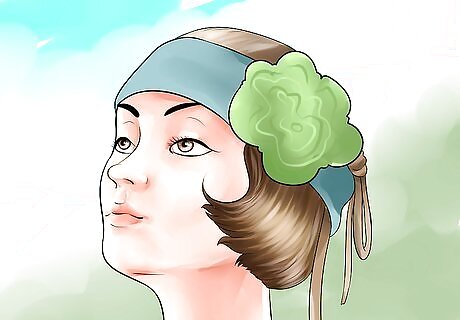
Choose a headband. Beaded, sequined, or pearl headbands are a classic choice and are perfect for slight subtlety and understated elegance. Flappers typically wore their headbands running across their forehead and down across their hair. Your simplest option is to fashion a simple beaded headband from a string of beads. Buy a string of beads long enough to fit around your head and fasten the two ends together with either hot glue, a hair tie, or some elastic. You can then opt to add a feather clip to the headband for additional vintage flair. Another option for a simple headband is to buy a sequined headband or buy a solid-colored headband and glue sequins to it. You can customize a slightly more elaborate headband by buying a length of elastic (the thinner, the better) about 1/2 the circumference of your head, pearl beads in your size of choice (just make sure to buy enough to go around the circumference of your head). Then string the beads around the length of elastic and then tie to ends together.
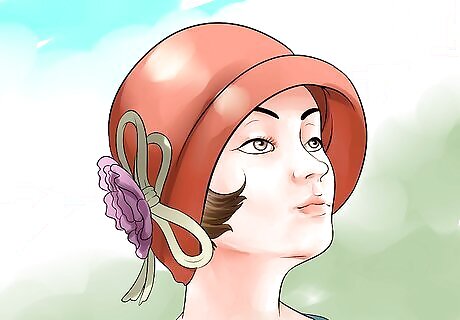
Choose a hat or head piece. If you prefer more of a statement piece than a headband, opt for one of the classic flapper head coverings--a cloche hat, a cloth turban, or a beaded skullcap. The hat most associated with flapper fashion is the cloche, a bell-shaped hat (“cloche” is bell in French) that fits closely to the head. You can find cloche hats at many online retailers as well as at many costume shops. Many flappers would adorn their cloche hats with beads, flowers, feathers, or embroidery, so don’t be afraid to accessorize your hat a bit. Another popular choice for headwear was the fabric turban. You can buy a ready-to-wear turban or select a length of cloth and tie your own. Tying your own turban is relatively straightforward and can be accomplished in a few steps. Flappers would also opt for close-fitting beaded skull caps, which can make an excellent choice if you don’t want to be bothered with the hairstyle, since they’ll completely cover your hair. Though skull caps are fairly difficult to make, you can buy them from many online costume and craft retailers.
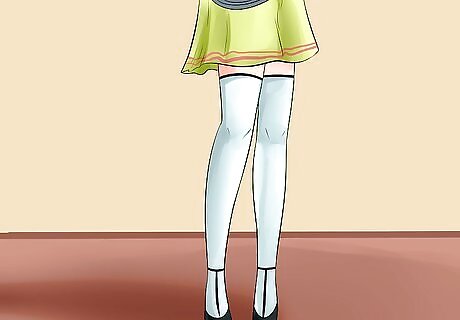
Roll your stockings. One of the big (and controversial) innovations of flapper fashion was the rolled stocking. Rather than wear “modest” stockings, flappers would wear short stockings (closer to today’s knee-highs) rolled up to just below the knee. The most important feature of the look was the roll left at the top of the stocking. By not fully unrolling their stockings, flappers created an appearance of their stockings being half-on--or half-off. The most popular color for stockings was a flesh-tone (black was considered conservative), though patterned and pastel-colored stockings also fit the flapper aesthetic. You have the option of opting for fishnets as well. Finally, remember that in the 20s, stockings still had seams, so if you want to enhance the accuracy of your hosiery, choose seamed stockings or draw a seam along the back with an eyebrow pencil.
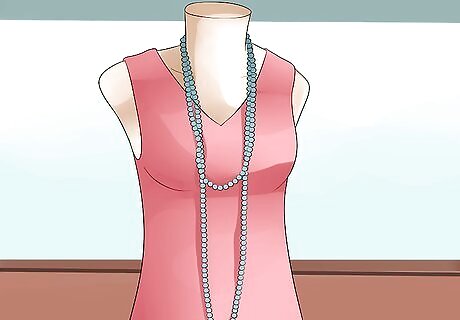
Choose your neck wear. Whether it includes scarves or long necklaces, the classic flapper look rarely ignored neck adornments. Opt for a single long necklace or several long necklaces of varied lengths. When flappers wore jewelry, it was almost exclusively long beaded necklaces, sometimes double-stranded. Or choose a scarf or boa. Fringe and feathers are of course the epitome of flapper style, so add a fringed scarf or feathered boa to your outfit for a little extra style. A scarf or boa is particularly ideal if you don’t have a long pearl or beaded necklace. If choosing a scarf, look for a long, thin one, ideally with fringe, to keep true to the flapper look.
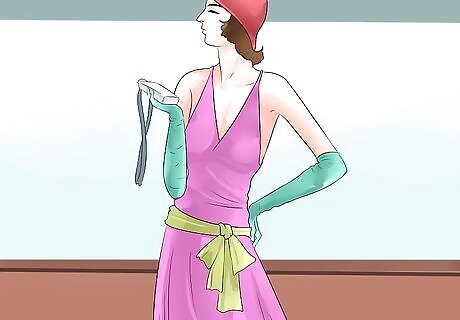
Add the finishing touches. There are some final signature accessories that will really set your flapper style apart. Put on some elbow-length gloves. Though many flappers enjoyed the the completely bare-armed look, elbow-length gloves were a good option for evening parties, and adding some to your costume can give you a touch of sophistication. You may need to look online specifically for elbow-length gloves, or you may be able to find a pair at a costume retailer. Carry a flask. If you want to truly embody the rebellious spirit of the flapper, carry a flask and show your disdain for Prohibition. A popular--and cheeky--way for flappers to carry their flasks was to secure it to their leg with a garter belt.











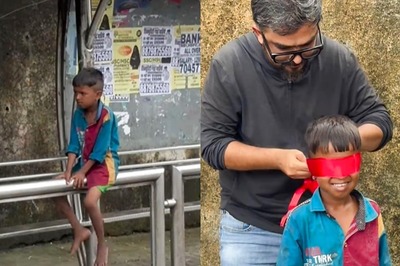
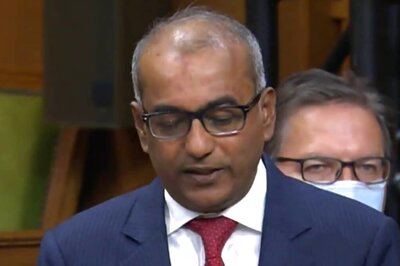




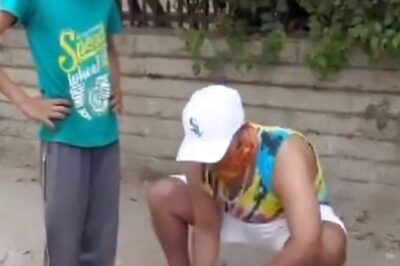


Comments
0 comment